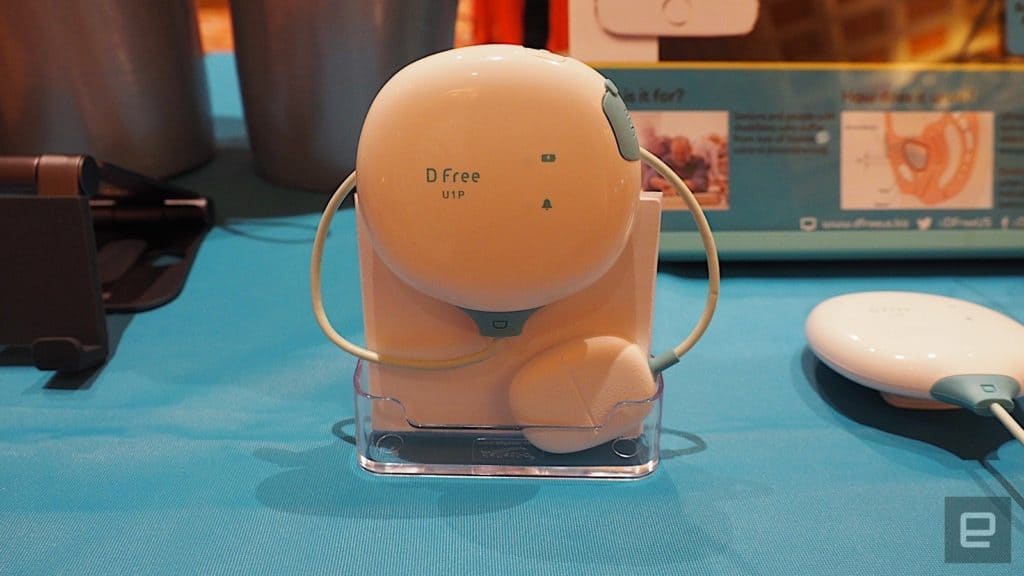
The always-on device uses ultrasound to gauge the fullness of the user’s bladder.
Most folks have little trouble recognizing when their bladders are nearly at capacity and are able to plan accordingly. However for the elderly, disabled, and infirm, doing so isn’t always quite so easy. But that’s where the DFree from Triple W comes in.
This wearable continuously-monitoring medical device sits just above the pubis and radiates ultrasound waves. These waves penetrate the body before bouncing off the user’s fluid-filled bladder; the fullness of which alters the sound waves’ path as they rebound back towards the transmitter. The device interprets then interprets that data to accurately estimate how full the bladder is and displays the information on an associated smartphone app, which the user (or their caregiver) can use to plan their next trip to the loo.
The DFree can be used in both home and institutional settings. In fact, the same device can be used in either situation. The only difference is the app, in that the commercial version can handle input from multiple DFrees, enabling nurses or hospice workers to simultaneously monitor multiple patients from a central station.
The Dfree is currently available for sale from the Triple W website, Amazon and select brick-and-mortar retailers. It retails for $500 or can be rented at a rate of $40 per month. The smartphone app is compatible with both iOS and Android.


